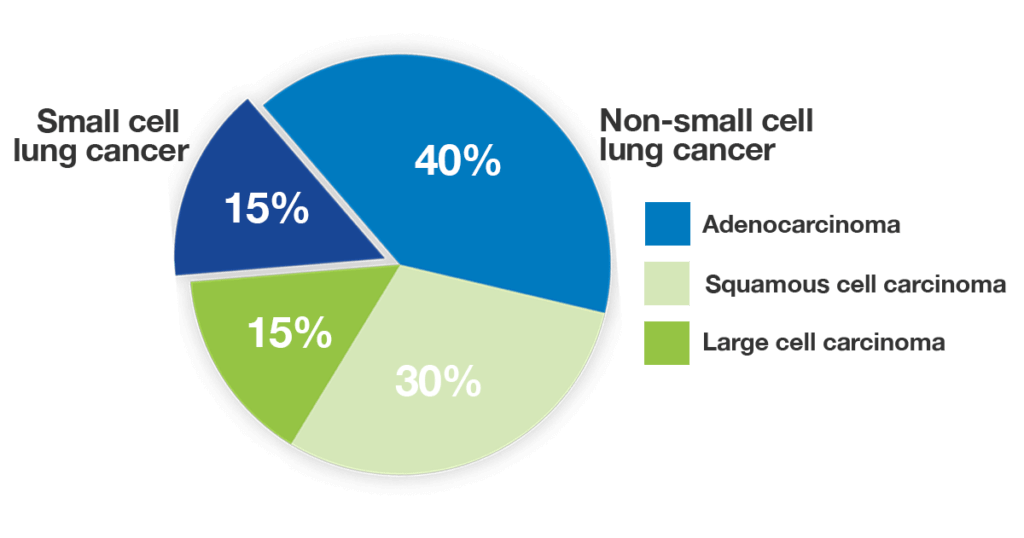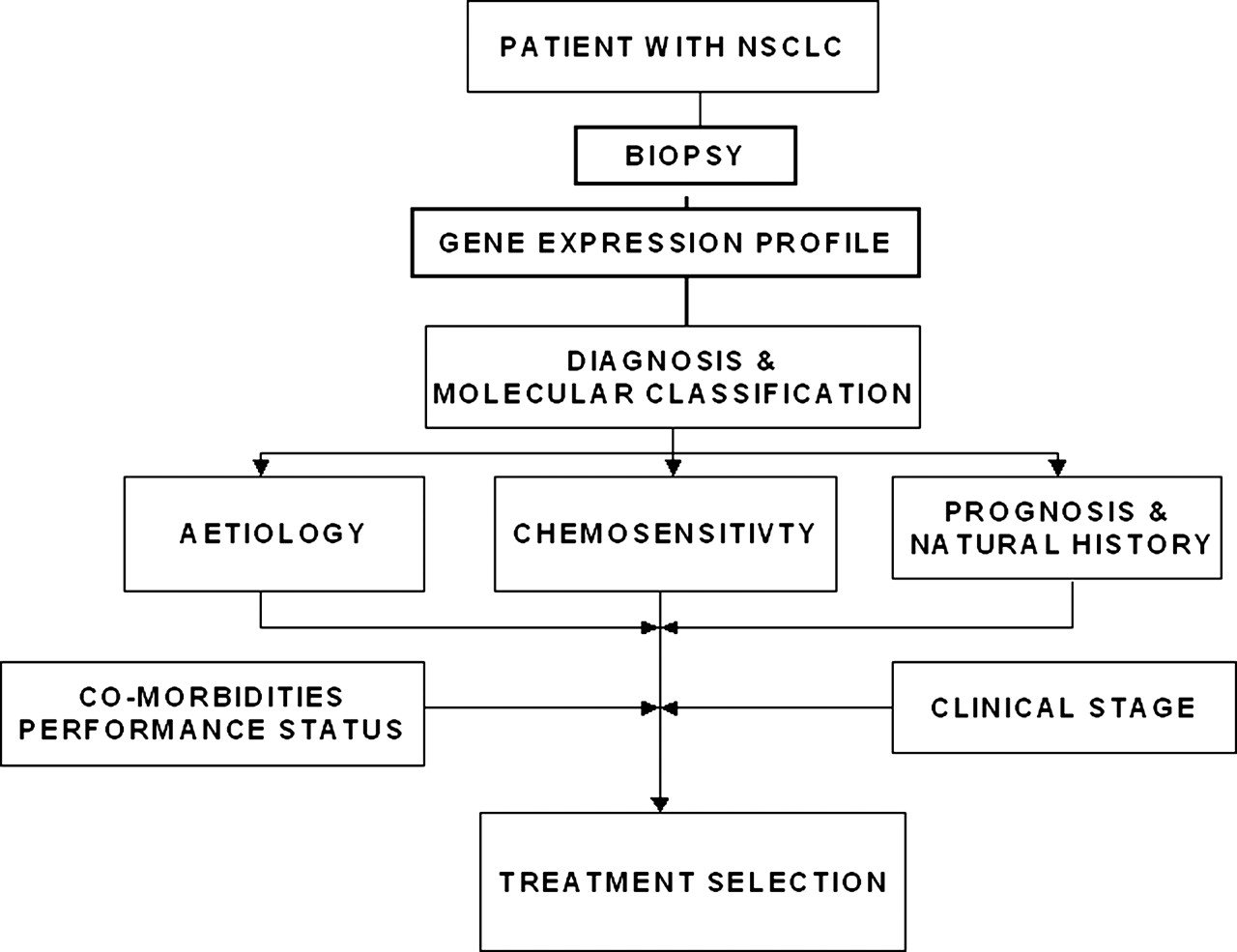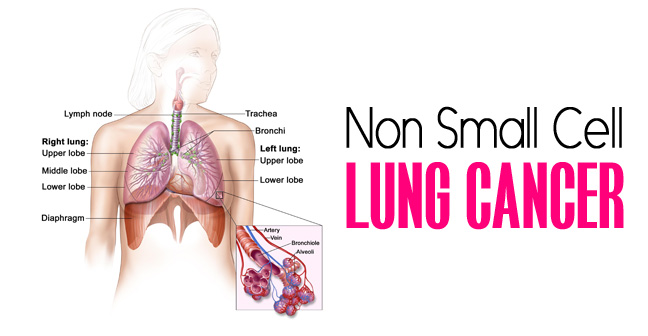
The uncontrolled growth of infected cells in lungs give rise to Lung Cancer. It is mainly of two types – Small Cell Lung Cancer and Non-Small Cell Lung Cancer. These two Lung Cancer types have a patient share in 9:1 that means about 90% of the lung cancer patients are suffering from Non-Small Cell Lung Cancer as compared to 10% of Small Cell Lung Cancer. Also, the multiplexing capacity of cells in Non-Small Cell Lung Cancer is slower as compared to Small Cell Lung Cancer.
Non-Small Cell Lung Cancer is Further Divided Into three Subtypes:

- Adenocarcinoma: About 40% of Non-Small Cell Lung Cancer patients fall into this category. The cells of Adenocarcinoma hits the outer parts of lungs.
- Squamous Cell Carcinomas: Around 20-25% of the Non-Small Cell Lung Cancer patients are in this category. The infected cells infect the inner lining of airways.
- Large Cell Carcinoma: About 10-12% of the lung cancer patients are from this category. Large cell carcinoma is called so, because of the cell size under the microscope. Also, these are the fastest growing and spreading cells.
Symptoms of Non-Small Cell Lung Cancer
One major drawback of Non-Small Cell Lung Cancer is that it doesn’t show any signs/ symptoms at the initial stage which makes it difficult to diagnose. When the cells start multiplexing, the significant symptoms which you get to experience are:
- Cough and Coughing up Blood
- Fatigue
- Chest Pain
- Weakness
- Joint Pain
- Unexpected weight loss
- Breathing Problem
- Wheezing
- Voice Changes
- Lasting Lung Problem like Pneumonia
Causes of Non-Small Cell Lung Cancer
As we all know, the general reason for any cancer is the growth of abnormal cells, but the major causes of Non-Small Cell Lung Cancer include:
- Cigarette Smoking
- Exposure to secondhand smoking
- Asbestos
- Radon (A radioactive gas found in rocks and soil)
- Aging
- Inherited Genes
- HIV/ AIDS
- Through any radiation treatment on Chest or Breast
- Air Pollution
Diagnosis of Non-Small Cell Lung Cancer

If you experience any of the above symptoms, consult with the doctor immediately. The doctor will look into your complete physical and medical history, and according to that he will conduct the tests like:
- Imaging Tests like CT Scan, PET Scan, MRI, X-Ray, Ultrasound for the internal view of a tumour. Also, this will explain the spreading level of Tumour.
- Bone Scanning.
- Biopsy of Lung cancer (A tissue is taken to study the disease).
- Microscopic examination of sputum/ phlegm to detect cancer cells.
Stages of Non- Small Cell Lung Cancer

As per the diagnostic test results, the doctors decide the stage of Non-Small Cell Lung Cancer so that proper treatment can be given. The Non-Small Cell Lung Cancer Stages and their tumor size is as follows:
Stage 0: Stage 0 of the non-small cell lung cancer is also called carcinoma in situ. It is unable to detect a tumor at this stage as it is very small in size.
Stage 1: Cancer is detected through the detection test, but the lymph nodes are affected yet.
Stage 2: In this Non-Small Cell Lung Cancer Stage, the cancer cells start to influence the nearby lymph nodes and walls of the lungs.
Stage 3: In this stage, the nearby lymph nodes are already affected, and now, the cells start to effects the nearby organs like the trachea, heart, etc.
Stage 4: This is the last stage of Non-Small Cell Lung Cancer. The body organs like the brain, bones, liver, etc start getting infected.
Must Read: Early Symptoms and Stages of Lung Cancer
The treatments like chemotherapy, surgery, radiation, etc are used to treat the non-small cell lung cancer. But when cancer reaches the last stage, it is almost non-curable. So, if you are regular with any of the above causes and experiencing the same symptoms as mentioned, then don’t skip the check-up and go for the Non-Small Cell Lung Cancer Treatment according to the diagnostic test reports.
Leave a reply





Leave a reply